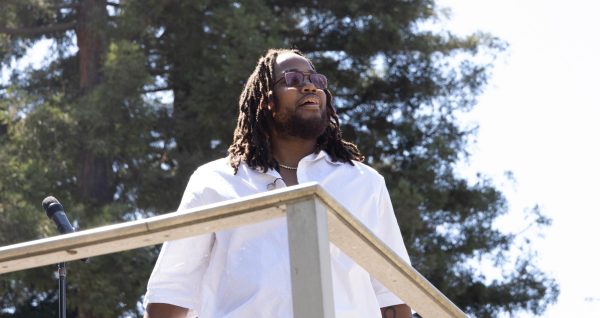New X-Files, Old Perspectives
When I heard that Shangela Laquifa Wadley, of Rupaul’s Drag Race fame, was set to guest star on the newest reboot of The X-Files, needless to say, I was excited. Shangela is like the little sister of drag queens: she’s annoying, and she never seems to go away, but you love her anyway. That said, her recent performance as a transgender woman may put her in hot water, or at least a timeout.
The fact that Shangela plays a transgender woman is not, in itself, problematic; in fact, it could be argued that the presence of a transgender person on a huge network television show progresses queer visibility in the mainstream. However, the way in which Shangela’s character is portrayed becomes potentially damaging for queer visibility.
Ira Madison III, an entertainment reporter for MTV News, describes Shangela’s role as a “transgender, crack-smoking sex worker attacked by a monster at a rest stop.” What makes this specific portrayal of transgender people harmful is that it is based upon stereotypes. The representation of a transgender woman of color, who is already a marginalized member of society, as a prostitute, a marginalized profession with its own societal stigma, and an addict, yet another marginalized and stigmatized group, pushes her to the very exterior of society. Not to mention that these stereotypical characteristics are generally perceived as negative, undesirable traits.
Why portray the transgender character in this way? One reason may be for comedy. Keeping in mind the gimmicky, over-the-top drag performance that Shangela is known for, this seems like a reasonable explanation. In their study on queerness and gender, Angelique Harris and Omar Mushtaq identify what they refer to as “the jester… a queer character used for comic relief. This representation usually exaggerates gender performance on sex-atypical bodies.” Although Harris and Mushtaq based their analysis on blaxploitation films, their findings are still relevant, especially considering the overlap of race, gender, and sexuality that embody the character.
Some might argue that Shangela’s performance falls in the category of camp, a style typically used in queer film and television that relies on intentionally theatrical and exaggerated performance, often in an attempt to subvert stereotypes. It’s an argument I’m willing to entertain; however, I find it lacking, given the nature of a show like X-Files and the fact that the show has made other blunders in regards to LGBT representation. For example, later on in the same episode, Fox Mulder and the monster who attacks Shangela hold a conversation in which they joke about sexual reassignment surgery.
Others might argue that the mere presence of a transgender person on a mainstream television program, stereotypes and all, it is progress for queer visibility. Even the problematic depiction of a transgender woman provides a platform for discussion, argument, and possible reform towards progress. As famed philosopher Michel Foucault once wrote, “where there is power, there is resistance,” and the presence of both creates discourse that allows us to negotiate or even challenge the accepted norms in society. Thus, by including a negative, stereotypical representation of a transgender woman, as opposed to the silence of no representation whatsoever, the X-Files has allowed for discourse to occur. Discourse like this article, for example.
Personally, I still found the episode very entertaining, which just proves what anyone with a sibling, significant other, or best friend already knows: sometimes, it is necessary to be critical of the things we love most.



